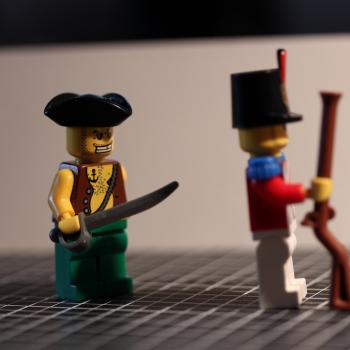While idling some time away playing computer solitaire and thinking about Easter, it dawned on me how much we humans like to grapple with puzzling things.
Early and often favorite childhood toys are jigsaw puzzles. Big, heavy, easy-to-manipulate shaped puzzles fill toy boxes of many a toddler. I know few children who don’t like solving them over and over again. It gives such satisfaction to fit the final piece and say, “It is finished.”
As we age, our puzzles grow in complexity. We gravitate toward greater challenges, like the 5000 piece puzzle where all the colors look alike and may take days or weeks to finish. What a sense of accomplishment when we conquer!
In fact, most of our favorite things in life are essentially puzzles to solve.
Athletic contests, international diplomacy, quantum physics, gardening, NASCAR races, computer games: all of them involve the art of out-maneuvering or finding the bigger picture of the opponent. In other words, we seek to discern the puzzle shape of other teams or individuals, different cultures, ever expanding scientific insights, weather and soil conditions, and the expertise of online gamers in a constantly changing jigsaw puzzle
The challenge makes life interesting. We are driven to solve them. In fact, the idea of the jigsaw puzzle to be solved and resolved in greater complexity is a great metaphor for human existence.
Now, what’s the connection between the human delight in solving puzzles and Easter?
Well, apparently Peter, one of the in-group followers of Jesus, was puzzled when several women (oh, such unreliable witnesses!) told him that Jesus was alive, not dead, about 36 hours after his unquestioned death and burial.
Now Peter was known as an impetuous man, quite full of his own importance and power. Much changed when he landed face-to-face with his weaknesses. For Peter, like the much more notorious Judas Iscariot, had betrayed his beloved teacher, Jesus, a few hours before the awfulness of the crucifixion.
There’s no suggestion that Peter even had the courage to show up and witness that horror. So, he may be somewhat understandably cautious when hearing death had been defeated.
Naturally, he went to check out the story—and his response, again, was wondering, puzzlement, uncertainty. That empty grave didn’t fit his life puzzle.
I believe all of us would have a similar response. Bodies don’t simply disappear from graves, especially when the burial ground is a mountain-side rocky cave sealed with a giant stone and guarded by decidedly unsympathetic people.
This piece just didn’t fit
Frankly, it really doesn’t fit with our lives either. The rules of our life puzzles come from a rational, “Prove it scientifically with a controlled, randomized, double-blind study” society, not one where something defies explanation .
For us, as it was for Peter and the other followers of Jesus, death is death. When something dies, its dead. Buried. Decomposed. Gone forever.
So, what do we do when confronted with a puzzle piece that just doesn’t fit? Do we toss it out? Or force-fit it into an unfilled spot? Or say, “some games are just too hard for me” and walk completely away, defeated?
All of the options have problems. All can leave us a bit dissatisfied and even uncomfortable. We need closure and explanation. Mysteries must be solved.
But Easter defies explanation.
Easter: the delight of hard, dead-looking trees limbs suddenly budding with life each spring. We can explain it, but . . . still an astounding event.
Easter: the mystery of freedom after slavery, where whole new ways of seeing self and others have to be internalized.
Easter: the dawn arriving after an impenetrable and apparently unending darkness, sometimes so brightly that we have to cover our eyes.
Easter: renewed hope arriving with the invitation to leave hopelessness behind.
Easter: the mystery of the unexplainable bursting into a world we insist on explaining.
Easter: God wins. Death loses.












